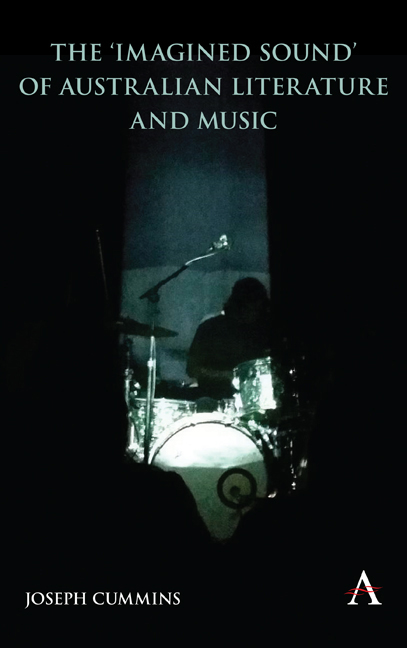Book contents
- Frontmatter
- Contents
- Foreword
- Acknowledgements
- Introduction: Imagined Sound
- Part One Listening to the Continent
- Part Two Listening to Islands and Archipelagos
- 4 An Archipelago of Convicts and Outsiders: The Songs of the Drones and Gareth Liddiard
- 5 Echoes between Van Diemen's Land and Tasmania: The Space of the Island in Richard Flanagan's Death of a River Guide and Carmel Bird's Cape Grimm
- 6 A Sonic Passage between Islands: Mutiny Music by Baecastuff
- Part Three Listening to the Continental Archipelago
- Coda
- Notes
- Works Cited
- Index
5 - Echoes between Van Diemen's Land and Tasmania: The Space of the Island in Richard Flanagan's Death of a River Guide and Carmel Bird's Cape Grimm
from Part Two - Listening to Islands and Archipelagos
Published online by Cambridge University Press: 18 September 2019
- Frontmatter
- Contents
- Foreword
- Acknowledgements
- Introduction: Imagined Sound
- Part One Listening to the Continent
- Part Two Listening to Islands and Archipelagos
- 4 An Archipelago of Convicts and Outsiders: The Songs of the Drones and Gareth Liddiard
- 5 Echoes between Van Diemen's Land and Tasmania: The Space of the Island in Richard Flanagan's Death of a River Guide and Carmel Bird's Cape Grimm
- 6 A Sonic Passage between Islands: Mutiny Music by Baecastuff
- Part Three Listening to the Continental Archipelago
- Coda
- Notes
- Works Cited
- Index
Summary
Exploring colonial history, contemporary trauma and the geoimaginary of the island, Richard Flanagan's Death of a River Guide (1994) and Carmel Bird's Cape Grimm (2004) embed genealogical narratives within revisionist historical fiction. The novels search for origins – of family, space and culture. Extending maps of the present back into the colonial past, they uncover the landscapes of violent contact between colonial settlers and Aboriginal people. Reading these two novels we listen to how imagined sound creates a spatio-temporal continuum bridging the chasm between the present and a lost and repressed past. This portal – created by two soundscapes in each novel – is explicitly figured in both works as the violent resonance of the clash between colonial and Indigenous culture, events that are sounded and re-sounded in traumatic echoes that link the past to the present.
My close listening analysis of the soundscapes at the foundations of both River Guide and Cape Grimm takes up Georg Lukacs's thesis on the historical novel – that it involves ‘not the retelling of great historical events, but the poetic awakening of the people who figured in those events’ (1962, 42) – and shows how this poetic awakening is also a sonic haunting. The return of the repressed via sound coheres most powerfully around the form of a scream. Circumscribing the geoimaginaries of the novels, the scream echoes across time and space to reveal within the separate hidden histories of River Guide and Cape Grimm a deeply entrenched tonality of trauma that places the island of Van Diemen's Land/ Tasmania between familiar island coordinates, origin and extinction. The experiences of trauma co-mingling between soundscapes past and present is as much a product of the island as it is a reinscription of the complexity of that geoimaginary: the island produces the soundscape and the soundscape produces the island.
Flanagan and Bird's imagining of the island also pushes against the historical and aesthetic dynamic, apparent in the tradition of Australian Gothic literature, that positions Indigenous Australian history, and the sound of that history, as other. Overlaying Australian Gothic and sociological theorizations of temporality and haunting with the spatial configuration of the island, the soundscapes in River Guide and Cape Grimm present Van Diemen's Land/ Tasmania as a staging ground capable of supporting the conflicting but nevertheless productive tensions that pierce the local/ national/ international landscapes and past/ present histories of the novels.
- Type
- Chapter
- Information
- The 'Imagined Sound' of Australian Literature and Music , pp. 99 - 114Publisher: Anthem PressPrint publication year: 2019

